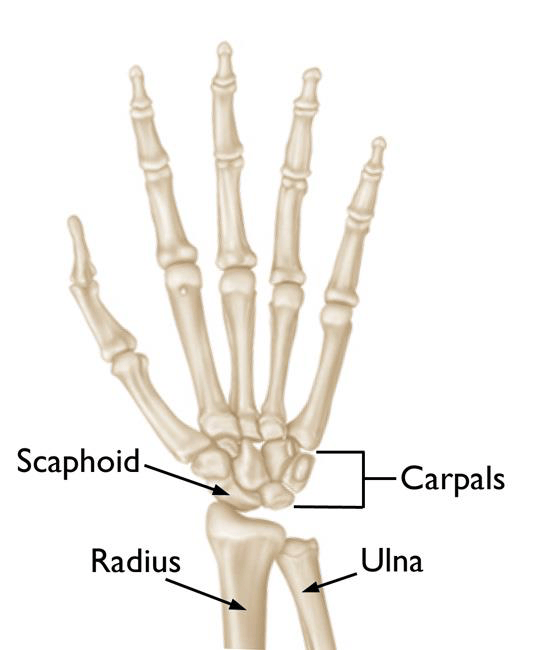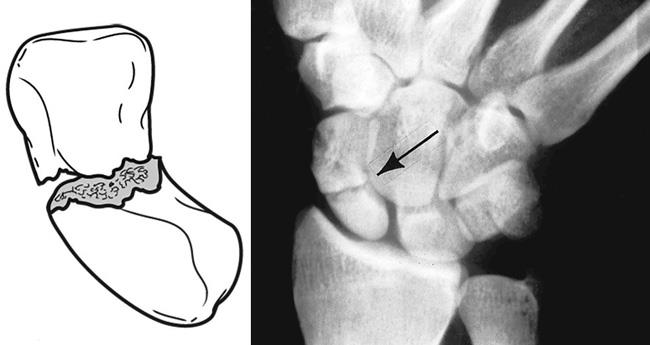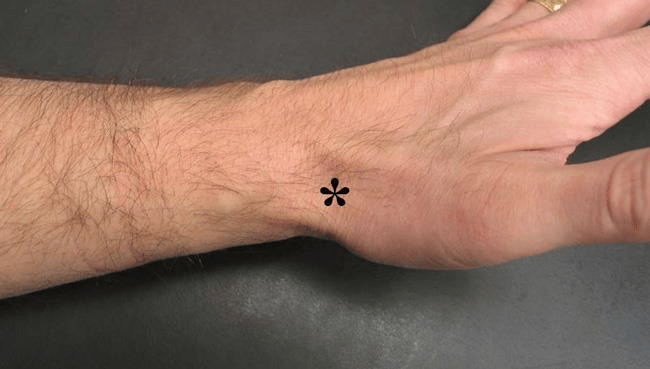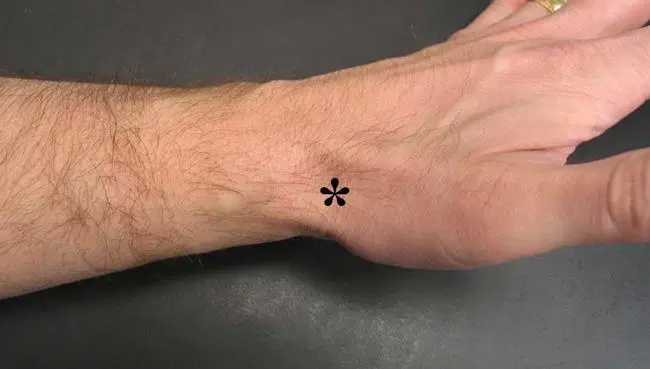A scaphoid fracture is one of the most frequent wrist injuries treated at Tran Plastic Surgery. It occurs when one of the eight small carpal bones in the wrist—the scaphoid—breaks, usually as a result of a fall onto an outstretched hand. Because of its delicate blood supply and critical role in wrist stability, scaphoid fractures are notoriously tricky to diagnose and treat. Left untreated, they can result in chronic pain, arthritis, and long-term disability.
At Tran Plastic Surgery, under the expert care of Dr. Tuan Tran, a fellowship-trained hand and reconstructive surgeon, patients receive advanced diagnostic imaging, cutting-edge surgical and nonsurgical treatments, and personalized rehabilitation plans to ensure the best possible recovery.
Anatomy of the Scaphoid Bone
The wrist joint is a complex structure formed by the distal ends of the radius and ulna (forearm bones) and eight small carpal bones. Among these, the scaphoid plays a pivotal role in:
-
Motion: allowing smooth flexion, extension, and rotation of the wrist
-
Stability: acting as a bridge between the two rows of carpal bones
-
Load bearing: transmitting forces between the hand and forearm
The scaphoid sits on the thumb side of the wrist, directly above the radius. Its unique location makes it particularly vulnerable to injury when someone braces a fall with the palm outstretched.
A key anatomical concern with scaphoid fractures is blood supply:
-
The distal portion (near the thumb) has relatively good blood flow.
-
The proximal portion (near the forearm) relies on retrograde blood flow, making it prone to poor healing or nonunion if fractured.
This explains why scaphoid fractures often heal more slowly than other wrist fractures, and why expert care is essential.

Causes and Risk Factors
Common Causes
-
Falls on an outstretched hand (FOOSH injury) – the most frequent cause
-
Sports injuries – snowboarding, skateboarding, football, soccer, and other contact or high-impact sports
-
Motor vehicle accidents – sudden trauma or bracing against impact
-
Workplace injuries – particularly in jobs involving manual labor or falls from height
Risk Factors
While anyone can sustain a scaphoid fracture, certain groups are at higher risk:
-
Young adults (ages 15–40) – more active and more likely to sustain falls during sports or recreational activities
-
Men – statistically sustain scaphoid fractures more often than women
-
Athletes – particularly those in extreme or contact sports
Wrist guards and protective equipment may lower—but not eliminate—the risk.
Symptoms of a Scaphoid Fracture
One of the challenges in scaphoid fracture care is that symptoms can mimic a wrist sprain. Many patients mistakenly dismiss their injury, leading to delays in diagnosis.
Typical symptoms include:
-
Pain and tenderness in the anatomic snuffbox (the hollow at the base of the thumb)
-
Pain when pinching, gripping, or twisting the wrist
-
Swelling on the thumb side of the wrist
-
Reduced range of motion
-
Bruising (less common than with other fractures)
Red flag: Pain that persists beyond a few days after a wrist injury should not be ignored. Even if X-rays look normal, hidden scaphoid fractures can worsen without treatment.
Classification of Scaphoid Fractures
Scaphoid fractures are classified based on location and displacement:
-
By Location:
-
Distal pole fractures (closer to the thumb) – generally heal faster due to good blood supply.
-
Waist fractures (middle section) – the most common site of fracture, with moderate healing challenges.
-
Proximal pole fractures (closer to the forearm) – hardest to heal due to poor blood flow.
-
-
By Displacement:
-
Non-displaced – bone fragments remain aligned; often managed with casting.
-
Displaced – bone fragments shift or overlap; usually require surgery.
-
-
By Stability:
-
Stable fractures – can be immobilized successfully.
-
Unstable fractures – high risk of nonunion or poor healing, requiring fixation.
-

Illustration and x-ray showing a break in the mid-portion, or “waist,” of the scaphoid.
Diagnosis at Tran Plastic Surgery
Accurate diagnosis is critical to successful treatment. Dr. Tran uses a combination of clinical expertise and advanced imaging.
Physical Examination
-
Palpation of the anatomic snuffbox for tenderness
-
Wrist movement tests for pain response
-
Assessment of swelling, bruising, and function
Imaging Studies
- X-rays: Your doctor will order an x-ray to examine your bone structure and determine whether or not you have a scaphoid fracture, whether your bone is displaced, or if you have any other fractures. Sometime a scaphoid fracture does not show up on an x-ray immediately following the injury and may become visible after 2-3 weeks. If your doctor suspects that you have a fracture, he/she may recommend you wear a wrist splint or cast during this waiting period to protect your wrist from further injury or complications.
- Magnetic resonance imaging (MRI) scan: Your doctor may order an MRI to further examine the bones and soft tissues in your wrist. An MRI can sometimes detect a scaphoid fracture before it can be seen on x-rays.
- Computerized tomography (CT) scan: A CT scan can be helpful at detecting a scaphoid fracture and can further indicate any bone displacements. Your doctor will use information from the CT scan to help determine your treatment plan.
Because hidden fractures are common, Dr. Tran may recommend temporary casting even if X-rays are negative but suspicion is high.
Treatment Options
Treatment is tailored to fracture type, displacement, location, and patient activity level.
Non-Surgical Treatment
Best for stable, non-displaced fractures.
-
Casting:
-
Thumb-spica cast (below or above elbow depending on fracture site)
-
Typically worn for 6–12 weeks, sometimes longer
-
-
Splinting: Used for less severe cases or while awaiting further imaging
-
Bone stimulation therapy: Low-intensity ultrasound or pulsed electromagnetic fields to encourage healing
Healing times vary:
-
Distal fractures: ~6–8 weeks
-
Waist fractures: ~8–12 weeks
-
Proximal fractures: 12+ weeks, often requiring surgical intervention
Surgical Treatment
Surgery is often recommended when fractures are displaced, located at the proximal pole, or fail to heal with conservative care.
Common surgical techniques include:
-
Closed or Open Reduction
-
Aligning bone fragments using small incisions, guided instruments, or arthroscopy.
-
-
Internal Fixation
-
Insertion of screws, wires, or pins to stabilize the bone until healing occurs.
-
-
Bone Grafting
-
Used for nonunion or avascular necrosis.
-
Non-vascularized bone graft: Bone harvested from the hip or forearm to fill gaps.
-
Vascularized bone graft: A bone graft with its own blood supply transplanted to improve healing in difficult cases.
-
Dr. Tran uses modern fixation devices and minimally invasive approaches whenever possible to maximize healing and minimize scarring.
Recovery Process
Recovery from a scaphoid fracture requires patience and adherence to medical advice.
-
Immobilization: Cast or splint worn until X-rays confirm healing.
-
Physical therapy: Essential to restore strength, motion, and function after prolonged immobilization.
-
Activity restrictions: Avoid heavy lifting, gripping, sports, or machinery until cleared by your surgeon.
-
Timeline:
-
Non-displaced fractures: 2–3 months for functional recovery
-
Surgical recovery: 3–6 months depending on complexity
-
Full return to sports/work: 6+ months in severe cases
-
Smoking cessation is strongly recommended, as nicotine delays bone healing.

Symptoms of a scaphoid fracture often occur in the anatomic snuffbox at the base of the thumb as indicated by the flower sign.
Potential Complications
Without appropriate treatment, scaphoid fractures can result in:
-
Nonunion – failure of the bone to heal, often requiring bone graft surgery
-
Avascular Necrosis (AVN) – bone death due to lack of blood flow
-
Arthritis – long-term joint damage leading to stiffness, pain, and reduced function
Early treatment significantly reduces the risk of these complications.
Why Choose Tran Plastic Surgery for Scaphoid Fracture Care?
-
Expertise in Hand and Wrist Surgery – Dr. Tuan Tran is a specialist in microvascular and reconstructive hand surgery.
-
Advanced Imaging and Diagnosis – ensuring no hidden fractures are missed.
-
Minimally Invasive Surgical Options – designed for faster recovery and less scarring.
-
Comprehensive Rehabilitation – tailored physical therapy to optimize outcomes.
-
Compassionate, Patient-Centered Care – from first consultation through full recovery.
We also treat related conditions, including Subungual Melanoma and Radial Styloid Tenosynovitis, providing complete Hand Surgery services in Huntington Beach.
Frequently Asked Questions
1. How do I know if I have a scaphoid fracture or just a sprain?
Persistent pain in the snuffbox region after a fall is highly suspicious for a scaphoid fracture. Always seek evaluation.
2. Do all scaphoid fractures need surgery?
No. Many non-displaced fractures heal well with casting. Surgery is needed if the fracture is unstable, displaced, or fails to heal.
3. How long before I can return to sports?
Most patients can gradually return to non-contact activities within 3–4 months, but full recovery for high-impact sports may take 6 months or longer.
4. Will I regain full wrist strength?
With proper treatment and therapy, many patients regain near-normal function, though stiffness may persist in severe or complex fractures.
Schedule a Consultation
If you have sustained a wrist injury and continue to experience pain, don’t risk long-term damage. A scaphoid fracture requires expert care to prevent complications.
📍 Visit us at Tran Plastic Surgery, Huntington Beach, CA
📞 Call us today at 714-839-8000
💻 Request a consultation online
At Tran Plastic Surgery, we combine surgical precision, advanced techniques, and compassionate care to restore function and get you back to the activities you love.
*References:
- Scaphoid Fracture. National Center for Biotechnology Information (NCBI). Available at: https://www.ncbi.nlm.nih.gov/books/NBK536907/
- Scaphoid Fracture of the Wrist. American Academy of Orthopaedic Surgeons (AAOS) – OrthoInfo. Available at: https://orthoinfo.aaos.org/en/diseases–conditions/scaphoid-fracture-of-the-wrist/

